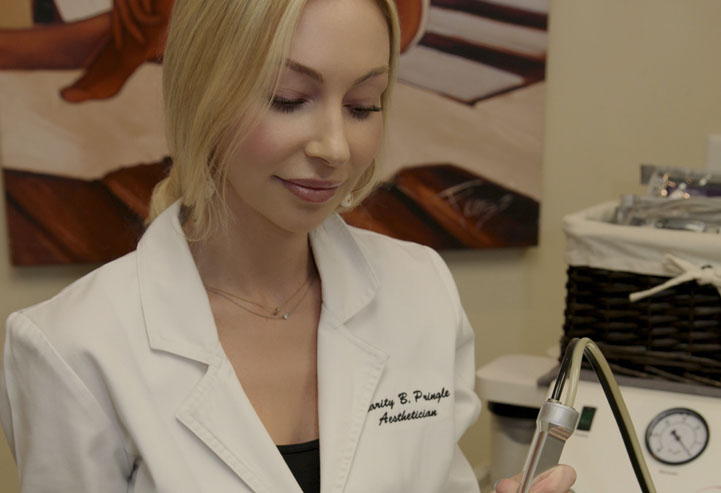ALERT!! May is National Melanoma/Skin Cancer Detection and Prevention Month
Dr. Glenn Goldberg and Dr. Bobby Awadalla at Coast Dermatology and Laser Surgery Center in Laguna Beach, California, want you to know the facts about skin cancer.
The California sun is beautiful and healthy, and also dangerous. The primary risk factor for about 90 percent of nonmelanoma skin cancers is high exposure to ultraviolet (UV) radiation from the sun or indoor tanning, and especially sun burns. Just by avoiding this risk, more than 3 million cases of skin cancer could be prevented.
- Skin cancer is the most commonly diagnosed cancer in the U.S.. One in five Americans will get skin cancer at some point in their lives. It may take ten or more years between the exposure and when cancer can be detected.
- More than 5.4 million new cases of non-melanoma skin cancer will be diagnosed and treated in the U.S. this year. This is more than the combined rates of breast, prostate, lung and colon cancer.
- Almost 9,000 people die from Melanoma every year. Melanoma accounts for 3% of all pediatric cancers. Melanoma risk factors include a family history of melanoma and the presence of more than 50 moles. Melanoma is the second most common form of cancer in females age 15-29.
- Most concerning is the increase in the incidence of melanoma, in people between the ages of 15 and 39, which has increased by 800% in women and 400% in men, in the past 42 years.
Mohs Surgery
Mohs surgery is the single most effective technique to remove Basal cell carcinoma (BCC) and Squamous cell carcinoma (SCC). Mohs cure rates are 99% for BCC and SCC, even in skin cancer that has been previously treated by other means.
Why are the success rates of Mohs surgery so high?
Because this surgery removes the skin cancer layer by layer. Each layer is scrutinized under a microscope until healthy cancer-free tissue is reached. Microscope-based removal saves the largest amount of healthy tissue. So it is less disfiguring than standard excision or any other method. Following removal of the skin cancer, facial plastic reconstruction is performed to address functional aesthetic results.
Each Mohs surgeon is trained as a cancer surgeon, a pathologist and a reconstructive surgeon. When you want your skin cancer treated by an expert surgeon trained in the utmost standards of excellence and competency, choose the Mohs Surgeon Dr. Bobby Awadalla at Coast Dermatology and Laser Surgery in Laguna Beach, California. Dr. Bobby is at the vanguard of Mohs Surgery. Advanced fellowship training in Mohs surgery is what qualifies him as an expert. Dr. Bobby is an expert in facial plastic reconstruction following skin cancer removal and provides the highest quality cosmetic results.
There are 3 main types of skin cancer:
- BCC is the most common form of skin cancer. BCCs are rarely fatal, but can be highly disfiguring if allowed to grow. Anyone with a history of sun exposure can develop BCC.
- SCC is the second most common form of skin cancer, and has a risk of spreading to the lymph glands and organs. It most commonly affects African Americans and Asian Indians, and is the second most common skin cancer among Hispanics and Chinese/Japanese Asians.
- Melanoma accounts for only 1% of all skin cancers, but it is the deadliest of skin cancers. The American Cancer Society estimates that 76,380 new cases of invasive melanoma will be diagnosed in 2016 in the U.S.; and estimates that there will be 10,130 deaths from melanoma in 2016.
Early detection
Early detection is the key to health. Give yourself a full body check. Especially check your head, face, ears, neck, upper back, hands and arms.
When you see a suspicious looking new lesion that bleeds, oozes or crusts, doesn’t heal, or lasts longer than a month, you should see a Coast Dermatology dermatologist immediately for evaluation. When detected and treated early, most skin cancers can be cured.
If you have a lot of moles look for these melanoma warning signs:
A – Asymmetry. When one part of the mole does not match the other part
B – Borders. The mole’s borders are irregular with ragged, notched or blurred edges
C – Color. When the mole’s color is not uniform and there are areas of tan, brown or black
D – Diameter. The diameter of the mole is greater than the size of a pencil eraser.
E – Evolution. The mole evolves and changes.
Prevention
Even when you can’t see it, the dermatologists at Coast Dermatology and Laser in Laguna Beach, can. Early detection means treatment is more likely to be successful. At Coast Dermatology and Laser Surgery Center in Laguna Beach, we recommend an annual whole body screening for cancer detection.
Steps you can take to prevent skin cancer include:
- Wear sunscreen- it should be the blocking sun screen not the chemical sun screen
- Wear protective clothing outside
- Stay in the shade from 10 Am to 4 PM
- Do not burn
- Do not use a tanning bed
- Keep newborns out of the sun and do not use sunscreen until the baby is 6 months old.
- Examine your skin
- Get an annual whole body exam from the dermatologists at Coast Dermatology and Laser in Laguna Beach
Get the information you need from Coast Dermatology and Laser in Laguna Beach, California.
Sources:
American Cancer Society Cancer Facts and Figures 2016. www.cancer.org
The Skin Cancer Foundation- www.skincancer.org
The American College of Mohs Surgery- www.mohscollege.org
The American Academy of Dermatology- www.aad.org





